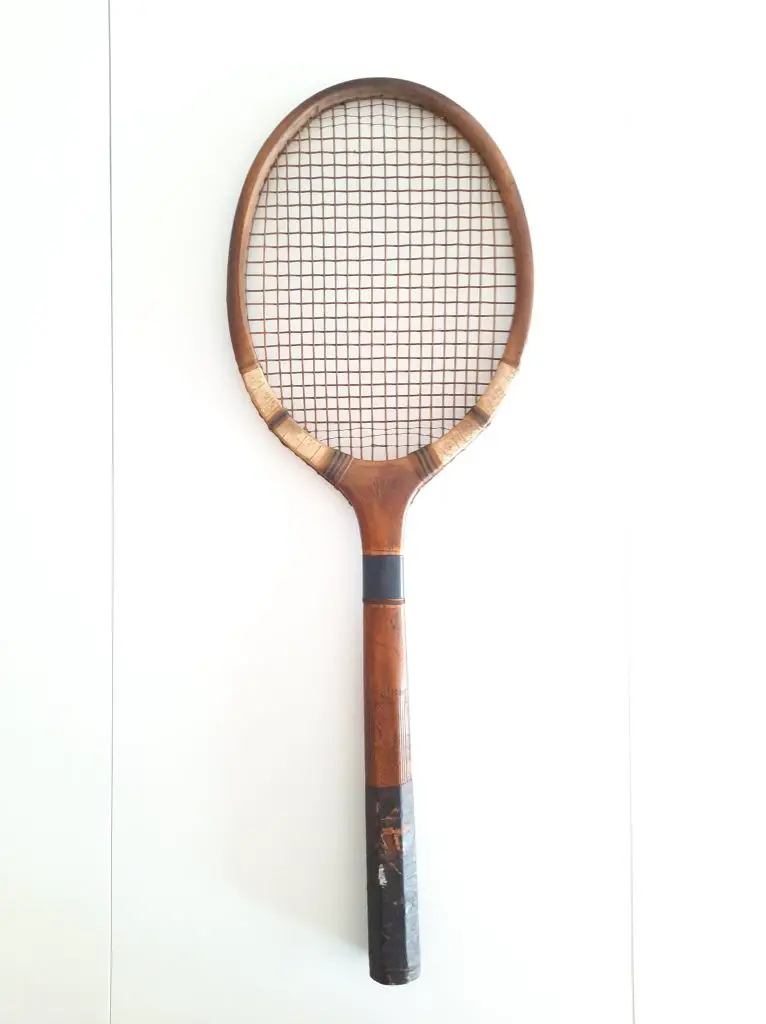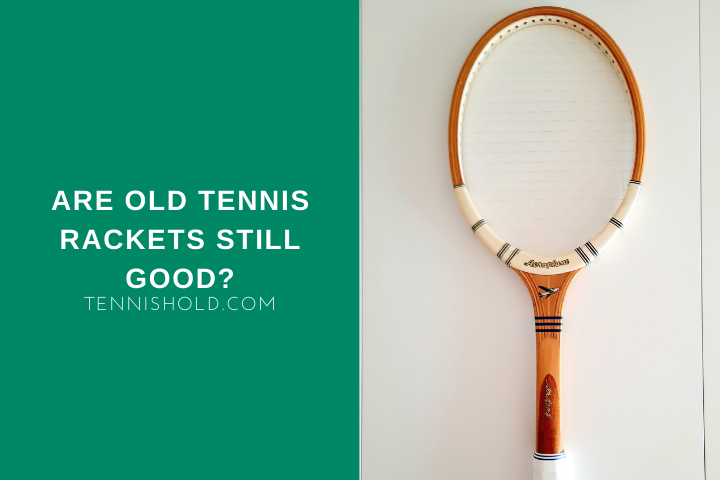Recently I discovered a new hobby and started collecting old tennis rackets.
Some time ago, one of the local tennis clubs drew my attention with their vintage tournament. You could have joined the draw as long as you were playing with a wooden racket.
I was curious about wooden rackets’ quality and performance. Although new technologies replaced them a generation before, you should adapt quickly to play with them if you are a good player.
Old tennis rackets are still good to play. You can still produce decent power and spin of the ball. However, compared to modern tennis rackets, old wooden rackets are prone to be damaged quickly and cannot be customized.
Vintage rackets were replaced with new models made of lighter and more durable materials. Because of that, the game became now faster and extremely challenging. You have to put twice as much effort into being able to compete.
One thought intrigues me the most. How did tennis rackets evolve from a wooden structure to the most sophisticated technological materials?
Evolution Of Tennis Rackets

Before people started using rackets to play tennis, they hit the ball with bare hands. Occasionally, players wore gloves on their hands.
In the 18th century, wooden rackets were already standard equipment. Their structure consisted of a thick wood frame and a small tilted or lopsided head.
This unique style made it possible to return hard-to-reach balls.
The next step in evolution is dated back to the late 19th century. Those rackets were characteristic for the head shape.
They could be ovate, lopsided, flat-top, or rounded triangular, but the oval shape became the most common in the end.
Another typical 19th-century racket feature was the type of handle. You could make your favorite a weird form of fishtail, bulbous, fantail, or ball tail. Or simply select today’s classic grip made of cork or wood.
Wooden tennis rackets happened to need an improvement soon. The most challenging issue lay in their durability.
Then, in the early years of the 20th century, a few ideas appeared, a milestone for further tennis development.
A.G. Spalding & Bro. Company in 1905, and Bancroft Racket Company in 1915 patented and applied their revolutionary solutions. They created them to strengthen the racket frame and the throat, which was the weakest point.
Despite that, shortly after, the first metal racket was released by Dayton Racquet Co. It aimed to be an answer for breakable wooden rackets. But, the era of metal rackets lasted only until the 1940s and ended with the beginning of World War II.
The market of wood tennis rackets grew up later with the appearance of the lamination technique. This process changed the overall perspective by offering decorative and customized frames. From this point on, the rackets gained additional marketing assets over their functionality.
Laminated rackets were in production for around four decades. They were finally crowded out by composite in 1980. This included such materials as fiberglass, ceramic, graphite, etc.
Meanwhile, in the 1960-the 1970s, metal was also the new focus in advancing racket technology. This structural change carried a necessary modification in head size. In addition to standard 60-70 sq inches frames, a midsize 85-95 sq inches, and large 105+ sq inches racket heads were introduced to the market.
Professional tennis rackets of the 21st century beat all the previous inventions. Thanks to their complexity and lightweight graphite usage. Graphite is the most stable form of carbon, which provides stiffness, strength, and shocks absorption.
Modern tennis rackets maximize performance, durability, and are customized in every possible way. You can even connect them with your smartphone or laptop, and analyze records from an internal tracking device.
Are Wooden Worse Than Carbon Frame Rackets?

Wooden rackets are worse than carbon frame rackets. They are heavier, less maneuverable, and are easy to break. Additionally, their parameters and frame shape are susceptible to weather conditions.
Here are the major differences between wooden and carbon rackets:
| Parameters | Carbon Frame Racket | Wooden Frame Racket |
|---|---|---|
| Weight | 280-310g | 370-430g |
| Balance | Head/ Even/ Grip | Even |
| Flexibility | Low – High | Low |
| Weather Sensitivity | Low | High |
| Durability | High | Low |
| Sweet Spot | Small/ Medium/ Large | Small |
As you see, modern tennis rackets brought significant upgrades and fresh air into the competition. Their advantages moved tennis to the next level and forced players to challenge their limits.
But, over the last decade, racket technology has stuck in one place. The materials and methods used to build tennis rackets remained the same.
New models of your favorite frames are, in fact, a repainted recent version. Perhaps you will get a tiny adjustment or two.
The manufacturers tend to make lighter rackets with relevant stiffness. Such specification gives more powerful and spinny strokes.
Can You Still Play Well With An Old Racket?

No doubt you can still play well with an old racket. You’re accustomed to modern frames and grips, so you will need a bit of time to catch a feeling.
Your performance will, however, be slightly worse. That’s because wooden and metal racket frames are not really comparable materials.
I personally use wooden rackets during warmups. They are excellent to get concentrated on the contact point from the first minute of practice.
But I value old rackets’ excess weight even more. I fool my kinesthetic perception on purpose. Later, when I grab a regular racket, my swings and strokes are enormously fast and easy.
Wooden tennis rackets are still in use in many local and merited tennis clubs. This comes from the personal habits of senior members and long-time traditions. It’s kind of prestigious too.
If you look for attention, a wooden tennis racket is a great choice. I can guarantee you that your court will be closely watched.
You will also get some questions and have small talks about why you use an old tennis racket these days.
Final Words
The tennis market brings you so many rackets to select from that it’s rather impossible to make a good pick without testing them.
Most professional frames are now produced from graphite. However, you can still find less advanced or vintage equipment if you want.
Classy people store at least one wooden racket in their lockers.
Although you won’t be playing with old rackets at the highest level, it’s worth giving them a try from time to time.
The ability to compare racket parameters from different eras is priceless. You can gain extra knowledge about what was possible and impossible to do in the past.
Have you experienced the limitations of wooden tennis rackets yet?
Do you plan to buy one for fun?

